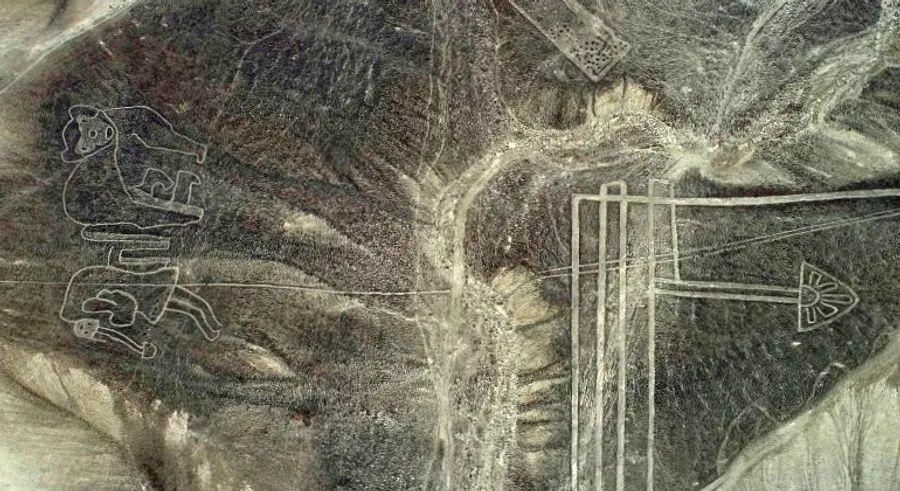A Guide to Visiting the Nazca Lines in Peru

Peru is home to Machu Picchu, one of the seven wonders of the modern world, attracting travelers from every corner of the globe.
However, for locals, Machu Picchu is rivaled by the Nazca Lines, the mysterious geoglyphs etched into the desert landscape in the south of Peru.
Ranging from simple lines to intricate geometric and animal shapes, these ancient designs stretch across the arid Pampas de Jumana plateau, with some reaching lengths of up to 1,200 feet—roughly the length of the Empire State Building.
The national tourism organization, PromPeru, even incorporates symbols from the Nazca Lines into its logo, with the letter P in 'Peru' echoing one of the iconic swirling patterns.
Although the Nazca Lines are incredibly important historically, they receive far fewer visitors than Machu Picchu or the bustling city of Lima each year.
This means you can have a unique and intimate experience without breaking the bank, and you won’t need to spend days acclimatizing or hiking to enjoy the site.
Here’s everything you need to know.

So, what exactly are the Nazca Lines?
One of the most captivating aspects of the Nazca Lines is their mysterious nature. Created around the first century CE, these geoglyphs were largely unknown until the early 20th century. Countless theories emerged about their origins and significance.
In 1994, the Nazca Lines were designated a UNESCO World Heritage site. UNESCO described them as “the most exceptional group of geoglyphs in the world, unrivaled in their extent, size, diversity, and ancient tradition.”
When viewed from the sky, the Lines take on various forms, with some formations even earning nicknames like The Sparrow, The Iguana, and The Flower due to their distinctive shapes.
While the Incas are often the most recognized ancient civilization in Peru, the Nazca people had a flourishing society in the desert for centuries before them.
The Nazca Lines are both fascinating and simple. They aren't deeply carved into the earth; instead, they are formed by shifting the top layer of desert sand and could likely be recreated by a group in just a few days.
The ease with which they could be made makes it all the more remarkable that the Nazca Lines have stood the test of time, enduring harsh winds for centuries without losing their form.
What’s the meaning behind them?
“For many years, both Peruvians and the global community believed these lines were linked to astronomical cycles, such as constellations and star movements,” says Javier Puente, a specialist from the Incas Expert Guide travel company.
“However, recent studies suggest this isn’t the case. Instead, the lines appear to be related to rituals and water sources.”
Puente, a native of Peru and currently an associate professor of Latino/a History at Smith College in Massachusetts, has encountered nearly every conspiracy theory about the Nazca Lines.

“Aliens didn’t draw these lines, that’s certain,” he states. This theory persists because some figures – particularly one called The Astronaut – seem out of place in time. However, no advanced technology or extraterrestrial intelligence was required to create them.
For people living in the desert, water is essential. Many experts believe these pathways could have pointed to water sources. It’s also possible they played a role in spiritual rituals, with people repeatedly walking the same paths to deepen the markings.
How can I experience the Nazca Lines?
Start by flying into Lima, Peru. From there, you’ll drive or take a bus for about 400 km (250 miles) along the Pan-American Highway to the coastal town of Paracas.
This vibrant surfer town hosted the sailing events during the 2019 Pan-American Games, and offers several great accommodations, including a DoubleTree by Hilton resort.
The best way to view the Nazca Lines is from the sky. Daily flights, each lasting around 75 minutes, depart from Pisco Airport.
If you’ve ever been frustrated by long airport security lines, you’ll love Pisco. Though fully equipped with modern amenities, the airport is nearly empty, making check-in and security a breeze—expect to breeze through in just a couple of minutes, even if you walk slowly.

While Pisco Airport is incredibly easy to navigate, the flight itself presents some challenges. Each plane holds just 10 to 12 passengers, and everyone is assigned a window seat. Taller travelers or those needing extra legroom may feel a bit cramped.
The winds in the desert around the Lines are notoriously strong, and on a small plane, you’ll feel every shift in the air. To ensure everyone gets a good view, the pilots will dip the plane low, giving passengers on both sides the chance to see different formations and snap photos.
The experience can feel a bit like being on a stunt plane, and even the most seasoned travelers may feel queasy. Be sure to bring plenty of anti-nausea medication, and don’t forget to use the provided plastic bags in case you need them.
Surviving the flight will make you feel like a true adventurer once you're back on solid ground, especially when you share your photos and bask in the bragging rights.
If you’re anxious about flying, there’s an alternative – an observation tower. You won’t get as close to the formations, but it’s a solid backup plan with a lot less risk of motion sickness.
Why is it worth visiting?
Like many of the world’s natural marvels, the Nazca Lines may not be around forever. Despite enduring for thousands of years, a major rainstorm could easily wash them away, especially with the growing threats of climate change.
Yet, the biggest danger to the Nazca Lines comes from human activity.
“The real threat is urbanization, road development, and the march of modernity,” explains Puente. “The Nazca Lines face greater danger from human progress than from any natural forces.”
Maybe it’s the fleeting nature of the Lines – rather than their symbolism – that truly gives the Nazca Lines their enchantment.

1

2

3

4

5
Evaluation :
5/5